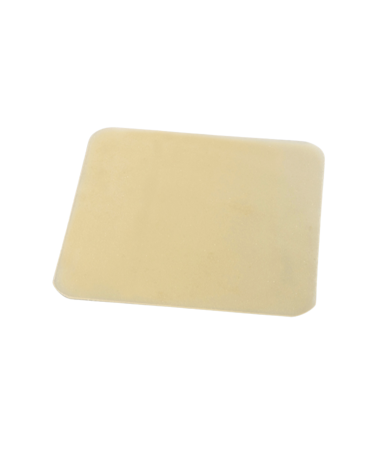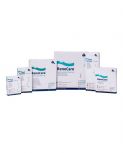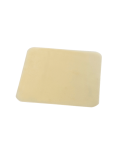Pharmacoll Thin Hydrocolloid Dressings
The Pharmacoll® product line represents a gelatine-free hydrocolloid wound dressing that converts into a gel when in contact with wound fluid. The moist wound environment created under the dressing speeds the natural healing process, reduces pain, and protects against bacterial and other external contaminants. Laminated to a semi-permeable, bacteria-proof and waterproof polyurethane film backing.
✚ 0.6mm Thickness
Sizes Available
✚ 5cm x 10cm - Pack of 10 Pieces
✚ 10cm x 10cm - Pack of 10 Pieces
✚ 15cm x 15cm - Pack of 5 Pieces
Features
✚ Adheres to both dry and moist skin surfaces
✚ Delivers gentle and secure adhesion that doesn't irritate the skin
✚ Has fluid absorption capacity that is adjustable based on adhesive formula
✚ Provides barrier properties to external contaminants with secure adhesion to skin
✚ Flexible and conformable - Molds to difficult anatomical contours
✚ Cushion effect
✚ Latex free
Intended Purpose
Pharmacoll® dressings are indicated to be used in:
✚ Partial and full-thickness dermal ulcers
✚ Pressure, leg and diabetic ulcers
✚ First and second degree burns
✚ Skin donor sites and skin grafts
✚ Superficial wounds/ minor abrasions
✚ Protection of fragile skin or areas exposed to friction such as elbows, heels or the sacral area
✚ Ostomy wounds to protect the skin from stomal effluent
✚ Post-op dressings for suture line protection
Contraindications / Precautions
✚ Don't use on patients with known sensitivity to the product or any of its components.
✚ Sterility is guaranteed, unless pouch is damaged.
How to Use
1. Clean wound area.
2. Evaluate the wound and select the dressing size to allow 2.5cm of the hydrocolloid adhesive to extend beyond the wound edge.
3. Open the pouch and handle the dressing using gloves or forceps.
4. Remove the release liner from the dressing.
5. Centre the dressing over the wound and the periwound area, then gently press the adhesive side of the dressing.
6. Care should be taken to avoid unnecessary stretching of the dressing, which can result in mechanical trauma to the wound and surrounding skin
Dressing Removal:
1. Carefully lift the dressing edges while pressing down on the skin.
2. Continue lifting the edges until all are free from the skin surface.
3. Press down on the skin to separate the dressing from the skin surface.
4. Gently remove the dressing and fold it over itself, pulling carefully in the direction of hair growth.
5. Alternatively, stretching the dressing horizontally and lifting it will also facilitate removal in most situations.
6. Discard the dressing into appropriate recycle bin.
How Often to Change The Dressing:
1. The dressing should remain in place as long as possible.
2. If leaks are detected, the dressing should be changed immediately.
3. Change the dressing when maximum absorption has been reached.



